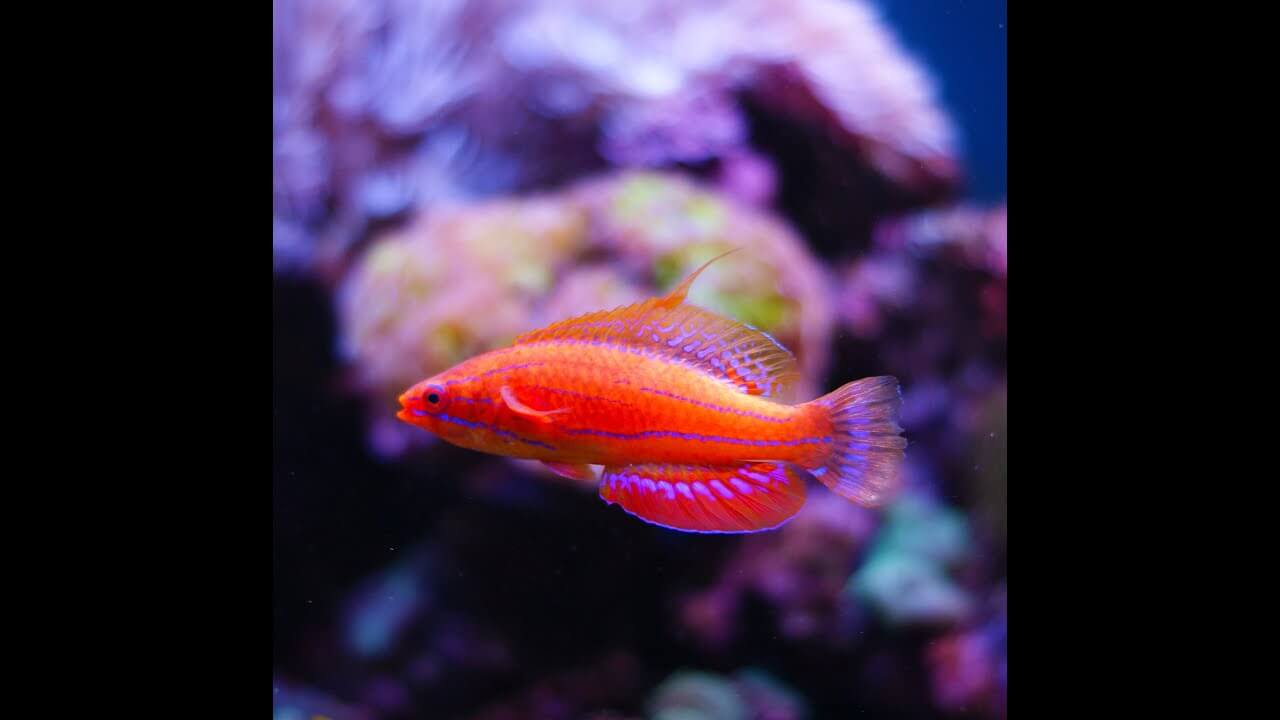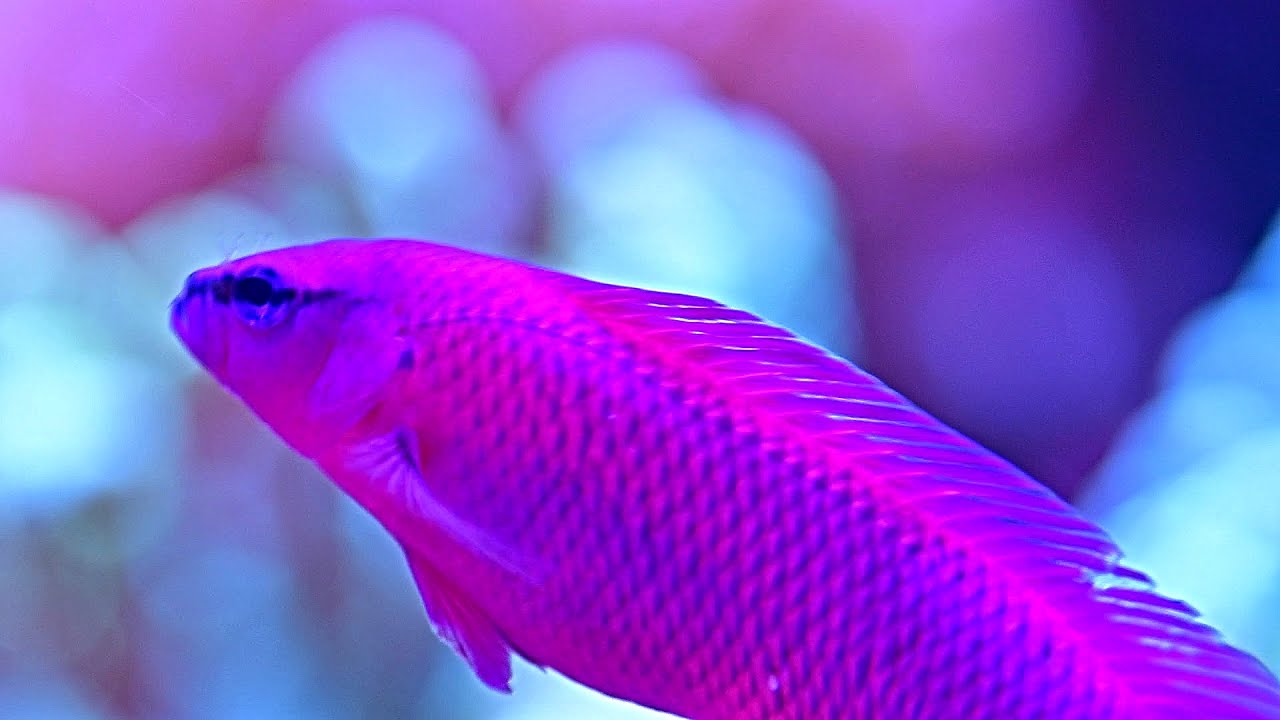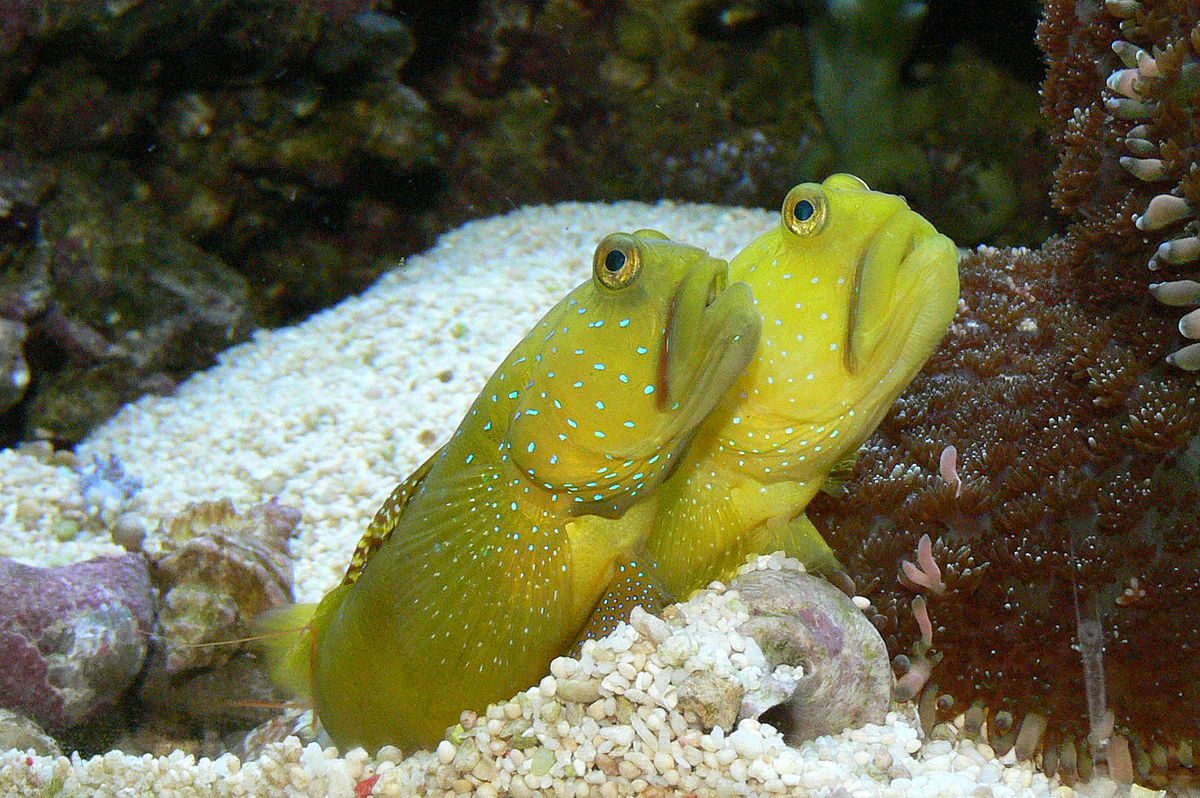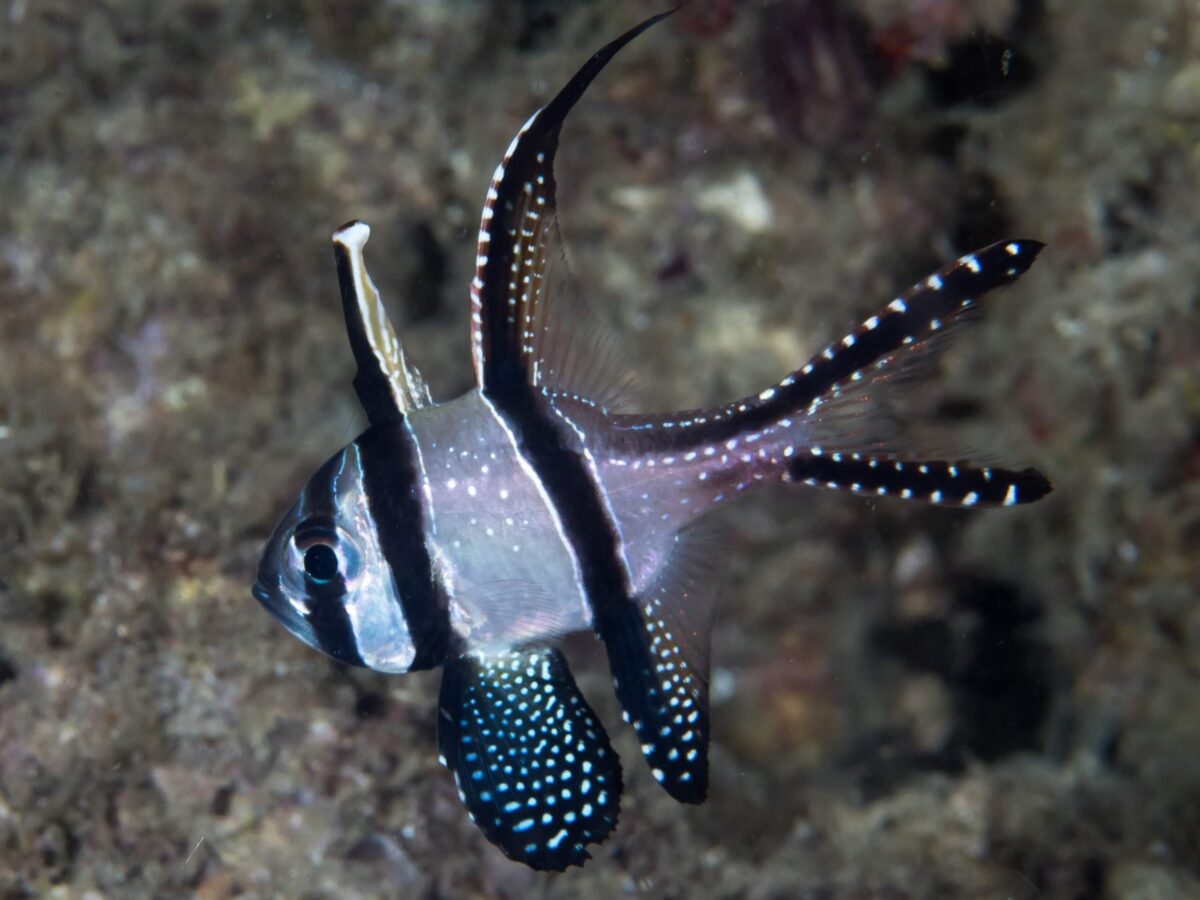G’day mates! Welcome to our comprehensive species guide on the Carpenter’s Flasher Wrasse, Paracheilinus carpenteri. This colourful saltwater aquarium fish is a stunning addition to any marine aquarium setup. In this guide, we’ll dive into the world of the Carpenter’s Flasher Wrasse and explore its taxonomy, natural habitat, physical description, care requirements, feeding habits, breeding behaviour, and more.
Whether you’re a seasoned aquarist or just starting, understanding the characteristics and needs of this vibrant wrasse species will help you create a thriving reef tank. So, let’s get ready to discover the beauty of the Carpenter’s Flasher Wrasse and learn how to provide the best care for it!
Key Takeaways:
- The Carpenter’s Flasher Wrasse (Paracheilinus carpenteri) is a colourful saltwater aquarium fish.
- Understanding the taxonomy, natural habitat, and physical description of the Carpenter’s Flasher Wrasse is important.
- Proper care, including suitable tank size, water parameters, and compatible tank mates, is essential for the well-being of this species.
- The Carpenter’s Flasher Wrasse has specific dietary preferences and feeding habits that should be considered.
- Breeding this species in captivity can be challenging but rewarding for dedicated aquarists.
Introduction – Carpenter’s Flasher Wrasse
Welcome to our comprehensive guide on the Carpenter’s Flasher Wrasse (Paracheilinus carpenteri). This section will delve into the taxonomy and classification of this stunning fish species and explore its natural habitat and distribution. Understanding these aspects is crucial for creating an ideal environment for this beautiful reef tank inhabitant.
Taxonomy and Classification
The Carpenter’s Flasher Wrasse belongs to the family Labridae and the genus Paracheilinus. Its scientific name is Paracheilinus carpenteri. By understanding its taxonomic classification, we can gain insights into its evolutionary lineage and characteristics, making it a unique and captivating species.
| Description | Details |
|---|---|
| Scientific name | Paracheilinus carpenteri |
| Common Names | Carpenter’s Flasher Wrasse, Carpenter Wrasse |
| Origin | Western Pacific |
| Family | Labridae |
| Social | Peaceful, good for community tanks |
| Domain in tank | Middle to bottom |
| Minimum tank size | 55 gallons |
| Diet | Carnivore; mysis shrimp, brine shrimp, prepared marine foods |
| Breeding | Difficult in captivity |
| Care level | Moderate |
| pH Range | 8.1 – 8.4 |
| Water Hardness | 8-12 dKH |
| Temperature in F/C | 72-78°F / 22-25.5°C |
| Common Diseases | Marine Ich, Velvet Disease |
| Life Span | 5+ years |
| Size | Up to 3 inches (7.5 cm) |
| Best Tank Mates | Peaceful reef dwellers like clownfish, gobies, and small damselfish |
Natural Habitat and Distribution
The Carpenter’s Flasher Wrasse is native to the Indo-Pacific region, specifically from the Coral Triangle to the Eastern Indian Ocean. It thrives in diverse natural habitats, including coral reefs, lagoons, and rocky areas with plenty of hiding spots. Known for its vibrant colours, this species adds a touch of beauty to its surroundings in its natural habitat.
Physical Description and Characteristics
The Carpenter’s Flasher Wrasse is known for its vibrant and striking appearance, making it highly desirable among saltwater aquarium enthusiasts. This species undergoes a remarkable transformation in colouration as it matures.
Colours and Markings
Carpenter’s Flasher Wrasse displays a beautiful orange body adorned with captivating blue vertical stripes during its juvenile stage. As it grows into adulthood, its colouration transitions to a stunning yellow hue with broken blue horizontal stripes. The adult male of this species features elongated dorsal fins characterized by vibrant red shades accented with yellows and blues.
Gender Differences
Gender identification in Carpenter’s Flasher Wrasse is possible through the distinct physical characteristics visible between males and females. Adult males exhibit more elaborate colouration and possess larger dorsal and anal fins, which are absent in females. Females typically have a more subdued appearance, lacking the striking features of the males.
Varieties
While there are no distinct varieties within the Carpenter’s Flasher Wrasse species, the range of color patterns and variations in its stunning coloration make each individual a unique and captivating addition to any saltwater aquarium.
Grades
In the context of the Carpenter’s Flasher Wrasse, no specific grades differentiate individuals. Instead, the appeal of each fish lies in its unique colouration and markings, making every specimen valuable and highly sought after.
Behaviour and Temperament
The Carpenter’s Flasher Wrasse is known for its energetic and lively behaviour. This species is generally peaceful and compatible with other non-aggressive tank mates. However, it is essential to monitor its interactions with other fish to ensure the overall harmony of the aquarium. This wrasse species is active and enjoys swimming throughout the water column, providing a lively and engaging spectacle in the aquarium.
Aquarium Requirements
Providing a suitable aquarium environment is crucial to the health and well-being of the Carpenter’s Flasher Wrasse. A minimum tank size of 55 gallons is recommended to accommodate the energetic nature of this species. The tank should have a tight-fitting lid to prevent the fish from jumping out. Creating a layout with ample hiding spots, live rock formations, and open swimming spaces is advisable.
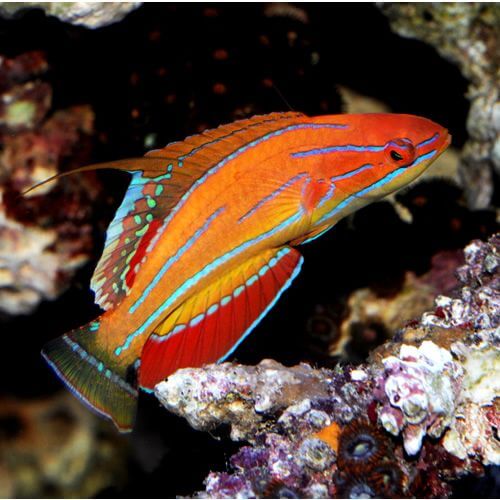
The water parameters should be maintained within 72-78 degrees Fahrenheit and a pH of 8.1-8.4. While the Carpenter’s Flasher Wrasse is generally peaceful, choosing compatible tank mates and avoiding aggressive species is essential. Additionally, consider the compatibility of this wrasse with live plants and invertebrates in your aquarium setup.
Carpenter’s Flasher Wrasse Care
Diseases
Proper care is essential for the overall health and longevity of the Carpenter’s Flasher Wrasse. While this species is relatively hardy, it is still susceptible to various diseases and health issues commonly seen in saltwater aquarium fish. Skin parasites, bacterial infections, and ich are some conditions that may affect the Carpenter’s Flasher Wrasse.
Regular observation, maintaining water quality, and providing a balanced diet are crucial to preventing and addressing any health concerns that may arise.
Diet and Feeding
The Carpenter’s Flasher Wrasse is a carnivorous species with specific dietary preferences. It primarily feeds on zooplankton, small crustaceans, and other meaty foods in the wild.
Dietary Preferences
The diet of Carpenter’s Flasher Wrasse (Paracheilinus carpenteri) is carnivorous, and in the wild, they primarily feed on small crustaceans, zooplankton, and other tiny marine organisms. In captivity, providing a varied and balanced diet is crucial for their health, colouration, and overall well-being. Here’s an ideal diet plan for Carpenter’s Flasher Wrasse in an aquarium setting:
- Mysis Shrimp: Frozen or live mysis shrimp provide essential nutrients.
- Brine Shrimp: Although not as nutritionally rich as mysis, brine shrimp, significantly when enriched with vitamins, can be a good part of their diet.
- Marine Pellets and Flakes: High-quality, sinking pellets and flakes formulated for marine carnivores can supplement their diet, ensuring they receive a balanced intake of vitamins and minerals.
- Copepods and Amphipods: These tiny crustaceans are part of their natural diet and are excellent for encouraging natural foraging behaviour. They can be introduced to the aquarium as part of a live refugium or added directly to the tank.
- Vitamin Supplements: Soaking food in a liquid vitamin supplement can help prevent nutritional deficiencies and support overall health, especially important for maintaining vibrant colors.
- Varied Diet: Offering a variety of foods is critical to providing a balanced diet that meets all their nutritional needs. It also helps keep the fish interested in feeding and mimics the variety they encounter in their natural habitat.
Recommended Foods and Feeding Schedule
Feeding should occur 1-2 times daily, in small amounts that the fish can consume within a few minutes. Overfeeding should be avoided to prevent water quality issues. Due to their small mouths and feeding habits, they do best with foods that are small enough to ingest quickly.
Tips on Ensuring a Balanced and Nutritious Diet
Ensuring a balanced and nutritious diet is crucial for overall health and colouration.
Breeding and Reproduction
Breeding the Carpenter’s Flasher Wrasse in captivity can be challenging but rewarding for dedicated aquarists. Sexing this species is relatively tricky, as the males and females have distinct differences in colouration and fin structure.
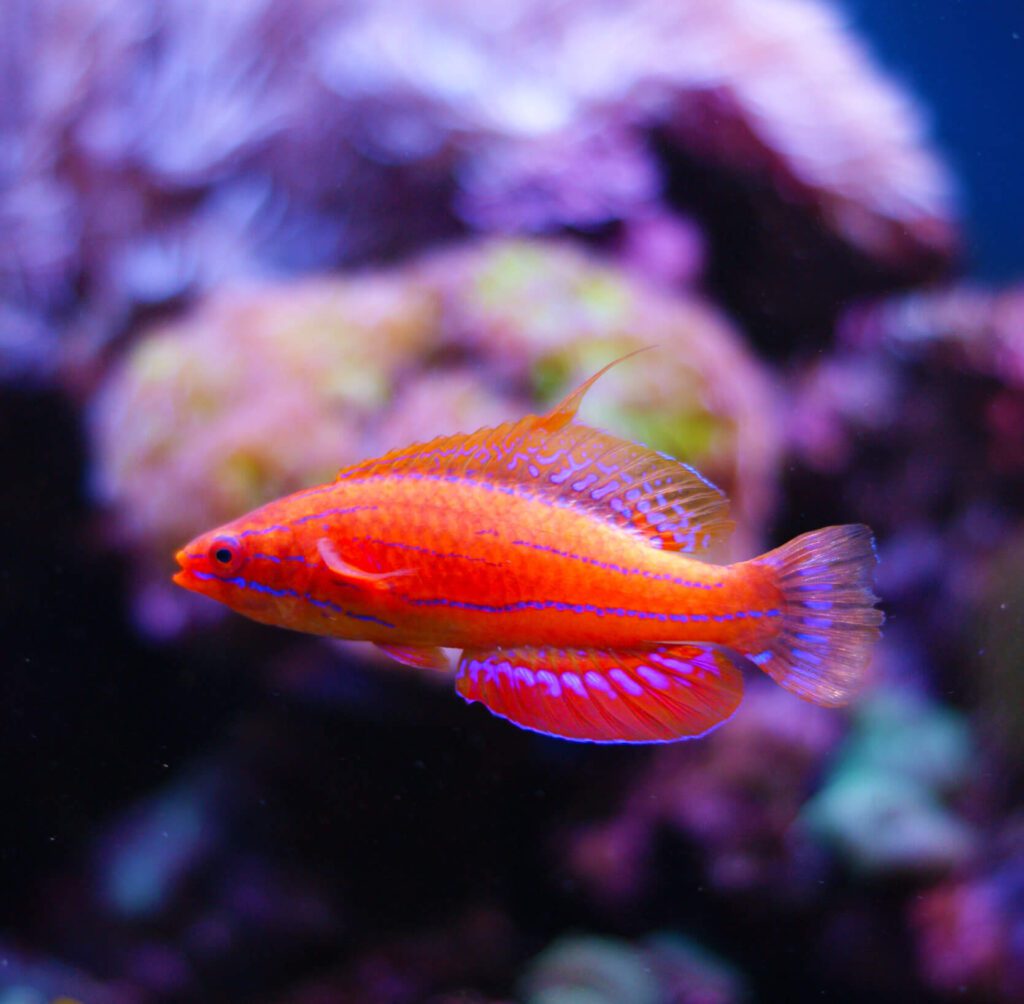
Sexing
During courtship, the males display vibrant colours and perform elaborate dances to attract the females.
Breeding Behavior and Conditions
Creating the right breeding conditions, maintaining optimal tank parameters, and providing suitable nesting sites are crucial for successful reproduction.
Care of Eggs and Fry
Taking care of the eggs and fry requires attention to water quality, proper nutrition, and protection from potential predators.
Challenges in Breeding in Captivity
Breeding Carpenter’s Flasher Wrasse (Paracheilinus carpenteri) in captivity presents several challenges common among many marine species. These challenges stem from their complex lifecycle, specific environmental requirements, and social behaviours. Here are the primary challenges associated with breeding this species:
- Environmental Conditions: Replicating the precise water conditions of their natural habitat is crucial but challenging. This includes maintaining stable water parameters (temperature, pH, salinity), which must closely mimic their natural reef environment to trigger breeding behaviours.
- Social Structure and Behavior: Carpenter’s Flasher Wrasse have specific social and behavioral needs for successful breeding, including the presence of a haremic structure (one male with several females). Ensuring the correct social structure in captivity can be difficult, as it requires careful observation and management to prevent stress and aggression.
- Spawning Inducement: Triggering spawning in a controlled environment can be complex. Factors such as seasonal changes, lunar cycles, and water temperature fluctuations can influence spawning in the wild. Replicating these conditions in an aquarium to induce spawning is challenging and often requires trial and error.
- Egg Collection and Rearing: Even if spawning occurs, collecting the eggs and raising the larvae presents further challenges. The eggs are often tiny and can be easily missed or damaged during collection. Additionally, the larvae are delicate and have particular feeding requirements, needing a constant supply of appropriately sized live foods, which can be challenging to provide continuously.
- Survival Rates: Fry survival rates in captivity are typically low due to their vulnerability to water quality issues, predation (even in a controlled environment), and difficulty meeting their nutritional needs. Achieving a high survival rate requires meticulous attention to water quality and feeding.
- Genetic Diversity: Maintaining genetic diversity is crucial for the health of any species, but in a captive breeding scenario, there’s a risk of inbreeding if not managed correctly. Access to a diverse genetic pool is often limited for hobbyists and even some professional breeders.
- Knowledge and Experience: Successfully breeding Carpenter’s Flasher Wrasse requires advanced knowledge and experience in marine aquarium keeping and breeding. The subtleties of the fish’s behaviour, diet, and environmental needs demand expertise and commitment.
Summary
The Carpenter’s Flasher Wrasse (Paracheilinus carpenteri) is a stunning and captivating fish species that adds vibrancy and color to any saltwater aquarium. Its striking coloration, energetic behavior, and compatibility with peaceful tank mates make it popular among marine aquarium enthusiasts. Understanding its physical characteristics, care requirements, feeding habits, and breeding behaviour will contribute to the overall success of keeping this beautiful wrasse.
When setting up a habitat for the Carpenter’s Flasher Wrasse, it is crucial to provide a suitable environment with ample hiding spots, live rock formations, and open swimming spaces in at least a 55-gallon tank. Maintaining water quality within the recommended parameters, choosing compatible tank mates, and considering the compatibility with live plants and invertebrates are essential for the well-being of this wrasse.
Feeding the Carpenter’s Flasher Wrasse a balanced and varied diet consisting of high-quality foods such as frozen mysis shrimp, brine shrimp, and marine flake or pellet foods enriched with vitamins is crucial for its health and colouration. Additionally, regular observation and attention to potential diseases or health issues will help ensure the longevity and well-being of this species in your aquarium.
In conclusion, the Carpenter’s Flasher Wrasse is a captivating and striking addition to any saltwater aquarium. By understanding its care requirements, providing a suitable habitat, offering a nutritious diet, and monitoring its health, you can create a thriving and vibrant marine ecosystem with the Carpenter’s Flasher Wrasse as the centerpiece.

